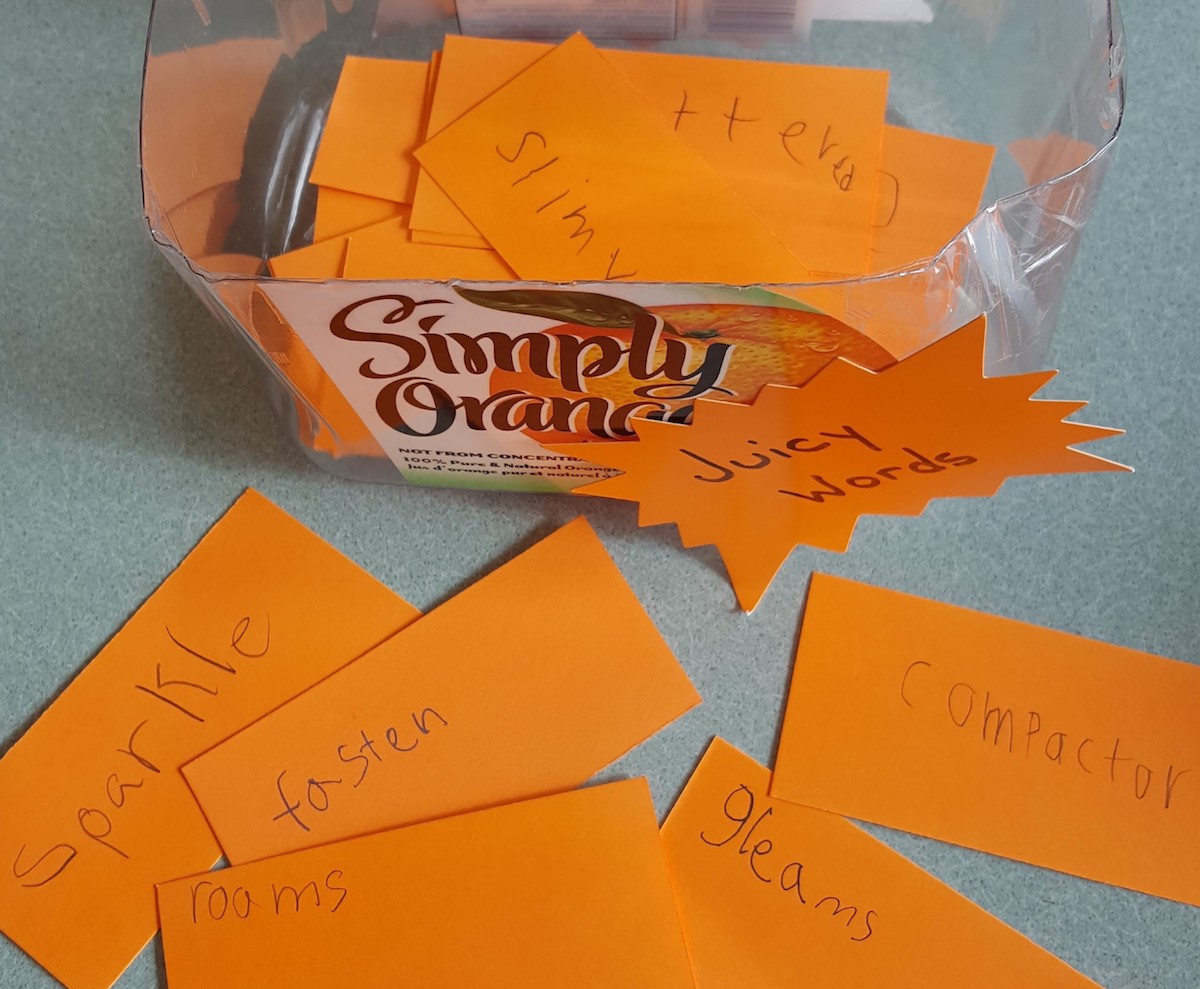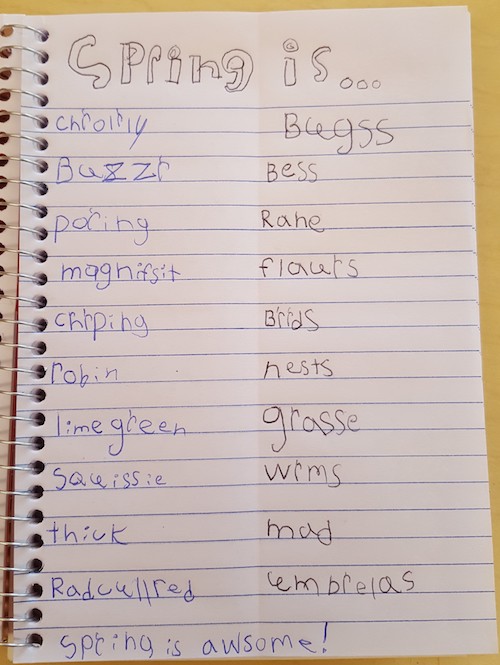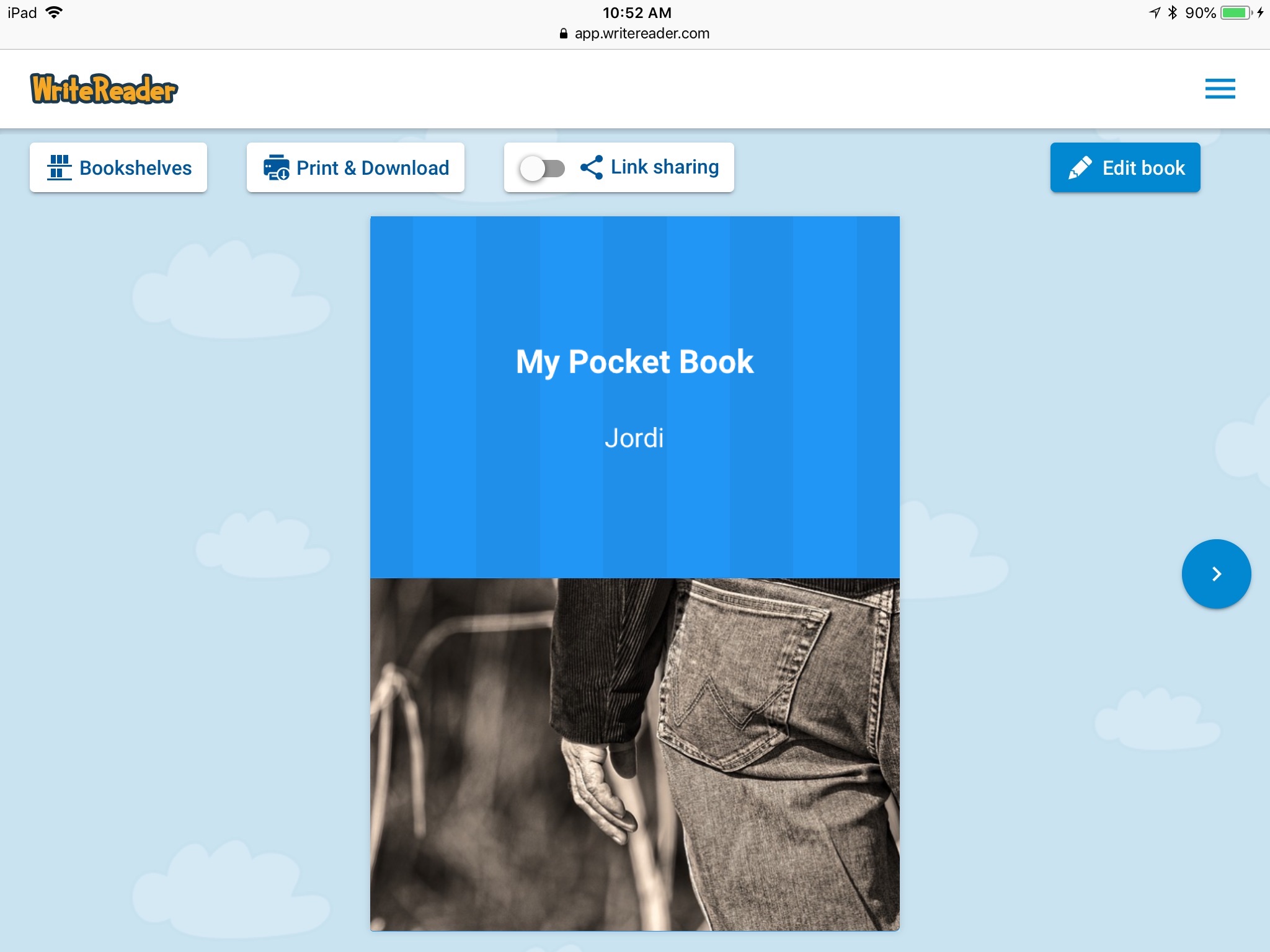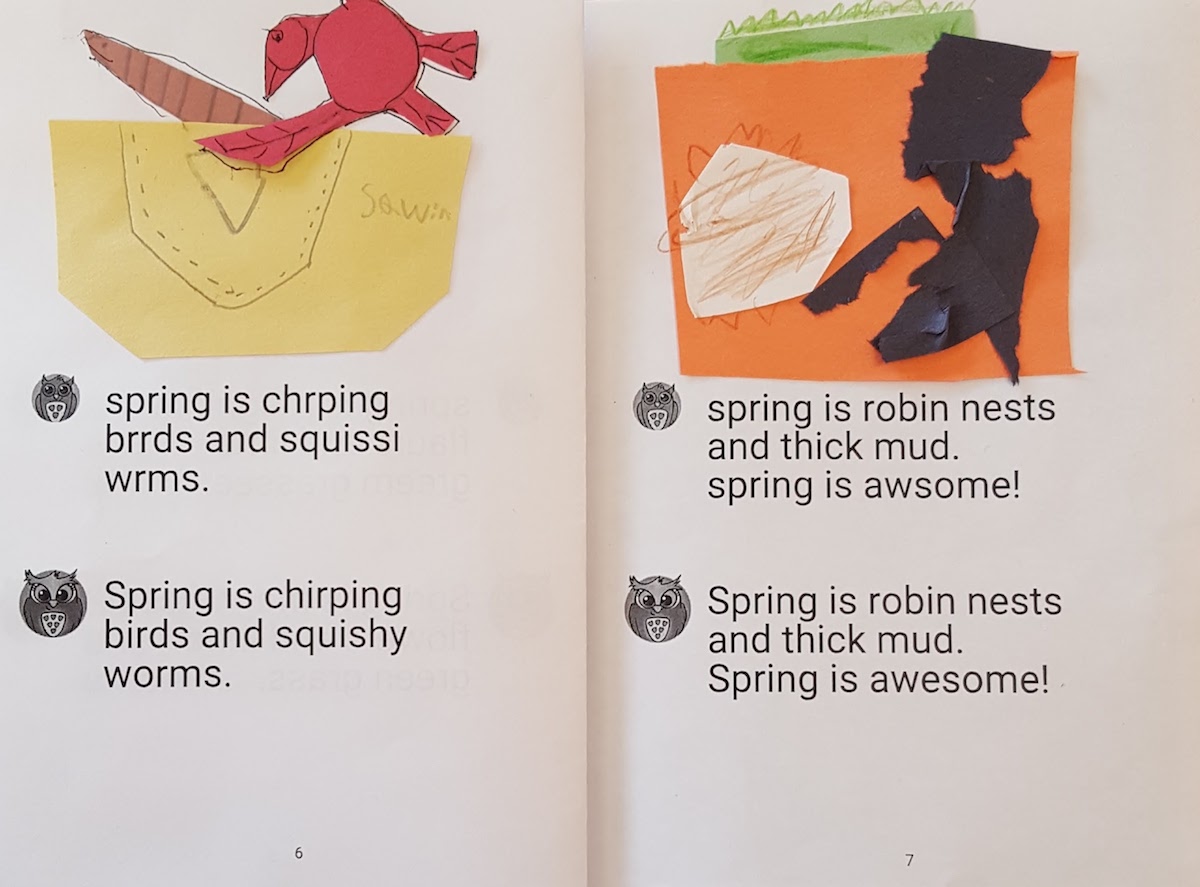
It has been said that ’painting is silent poetry, and poetry is painting that speaks.’ (Plutarch) But is it possible for young children to paint a picture with words? Of course it is! Let’s begin by looking at a favorite poem of many teachers and students, which was written by Beatrice Schenk de Regniers and is the inspiration for this poetry lesson.
Keep a poem in your pocket
And a picture in your head
And you’ll never feel lonely
At night when you’re in bed.
Learning Targets
- Students will read and listen to books and poems that use figurative language, color, image, symbol, and sound play.
- Students will experiment with these literary elements to create their own poems.
- Students will learn to make unexpected and fun word combinations that result in poetic language.
Pre-Writing Activities
- Read the story book,
The Word Collector
by Peter H. Reynolds. - Read lots of other stories and poems. Some seasonal storybook suggestions are
Mud
by Mary Lynn Ray and
Over in the Garden
by Jennifer Ward. A new release for your children’s poetry book collection is
With My Hands
by Amy Ludwig VanDerwater. - Introduce the term ’juicy words.’ Ask the children which words jump out as special words. Maybe they create a picture in their mind, maybe they’re unusual, maybe they just sound funny or are fun to say. Those words are ’juicy’ words. Be word collectors and find juicy words in books around the classroom. Write them down on orange cards and add them to a juice carton.

Writing Lesson
- Read the pocket poem above with your students.
- Choose a topic like ’spring’ and ask what they see outside. What are spring things? Words given should be nouns. Or pose a question like, ’What do you keep in your pocket?’ Create a word bank on the white board or chart paper as the children give suggestions.
- Next, children will fold a page in their journal in half. On the right hand side, they will write some of the chart words down or add more ideas on their own.

- Turn and talk with another student. Read your list to each other. Now help each other add some juicy or descriptive words on the left side of the page that fits with the noun on the right. Unexpected combinations make the best poetry (i.e. loud leaves, happy flowers). Encourage them to try several words before deciding. They can also look at mentor texts or the juice jug to find fun words. Let them play with words and have fun with it. This part takes time. If a student comes up with words like ’nice’ or ’good’ (for example), ask them if they think those are juicy words. Would a word collector keep those words? Keep at it. There are so many wonderful words available to us in conversation and written text. Some children need lots of practice with this.
- Once they are satisfied with their list, have them add an intro and a fun closing line. For instance, the intro might be ’In my pocket, I have .’ and the closing might be ’Oh, no! There’s a hole in my pocket.’
Integrating WriteReader
- Now that the students have a draft of their poem. They can type it in WriteReader. If needed, they have the option to edit further while using the app. After this, the teacher can transcribe their poem using conventional language in the adult writing field. Remember that writing is a process. Sometimes students need to write a draft on paper first. Just like adults, a blank computer screen can cause writer’s block at times.

- Print the books without adding digital images. Then, students glue three edges of a construction paper square on each page of the printed book. This creates a pocket. Students can cut out paper shapes and make notes or drawings that relate to the poem. They will tuck these items into the pocket.

- Celebrate poetry, their writing, and their book creations by sharing them with a buddy class, at a parent evening, or do an inside-outside sharing circle with your own class.
Extending the Learning
- Students can take pictures outside (i.e. flowers, grass) or around the school (i.e. keys, marbles) using an iPad. They can upload these pictures to WriteReader and add their own photos to their books after they have added pockets to their printed version. After this, they can read their poem and record it.
- Students can use loose parts (i.e. sticks, feathers, straws) to create visual representations of images in their poem, take photos with an iPad, and upload the photos to their poetry book.
- Do some app-smashing. After they’ve printed their WriteReader book and created a pocket book, they can take a picture of a page, and record themselves reading their pocket poem using the Chatterpix app. The app will make it look like the book is talking!
- Students may choose to write more poems about any topic or idea that intrigues them using the folded-page strategy or pocket books. Group lessons and activities are simply to teach our students about form, conventions, or writing strategies to enable them to become better writers. It’s never the goal to reproduce 20+ identical ’perfect’ copies. The process and the product should ultimately be more student-directed.
Keep a poem in your pocket or in your heart and so,
You can take joy and beauty with you, wherever you go!
